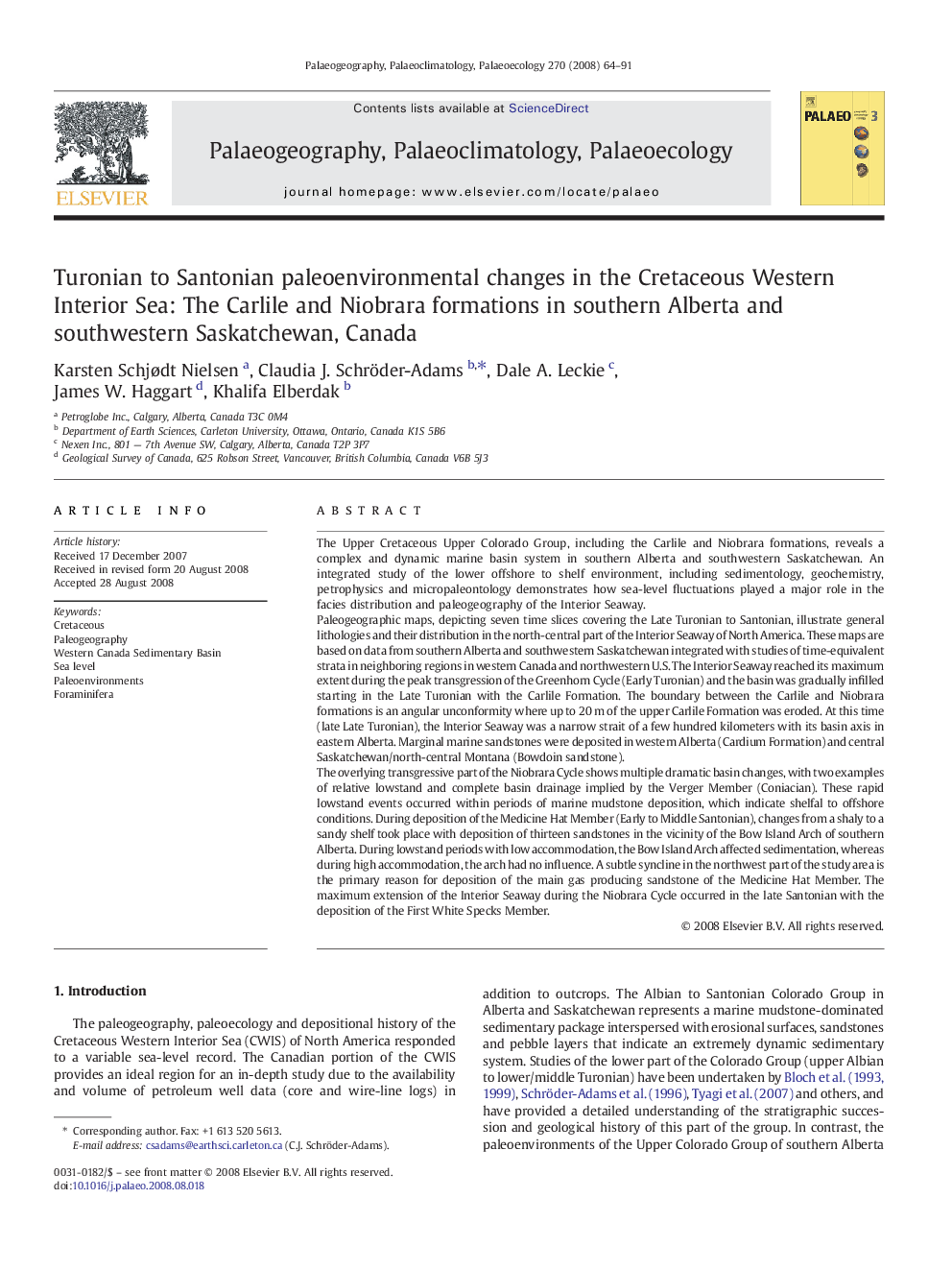| کد مقاله | کد نشریه | سال انتشار | مقاله انگلیسی | نسخه تمام متن |
|---|---|---|---|---|
| 4468319 | 1622314 | 2008 | 28 صفحه PDF | دانلود رایگان |

The Upper Cretaceous Upper Colorado Group, including the Carlile and Niobrara formations, reveals a complex and dynamic marine basin system in southern Alberta and southwestern Saskatchewan. An integrated study of the lower offshore to shelf environment, including sedimentology, geochemistry, petrophysics and micropaleontology demonstrates how sea-level fluctuations played a major role in the facies distribution and paleogeography of the Interior Seaway.Paleogeographic maps, depicting seven time slices covering the Late Turonian to Santonian, illustrate general lithologies and their distribution in the north-central part of the Interior Seaway of North America. These maps are based on data from southern Alberta and southwestern Saskatchewan integrated with studies of time-equivalent strata in neighboring regions in western Canada and northwestern U.S. The Interior Seaway reached its maximum extent during the peak transgression of the Greenhorn Cycle (Early Turonian) and the basin was gradually infilled starting in the Late Turonian with the Carlile Formation. The boundary between the Carlile and Niobrara formations is an angular unconformity where up to 20 m of the upper Carlile Formation was eroded. At this time (late Late Turonian), the Interior Seaway was a narrow strait of a few hundred kilometers with its basin axis in eastern Alberta. Marginal marine sandstones were deposited in western Alberta (Cardium Formation) and central Saskatchewan/north-central Montana (Bowdoin sandstone).The overlying transgressive part of the Niobrara Cycle shows multiple dramatic basin changes, with two examples of relative lowstand and complete basin drainage implied by the Verger Member (Coniacian). These rapid lowstand events occurred within periods of marine mudstone deposition, which indicate shelfal to offshore conditions. During deposition of the Medicine Hat Member (Early to Middle Santonian), changes from a shaly to a sandy shelf took place with deposition of thirteen sandstones in the vicinity of the Bow Island Arch of southern Alberta. During lowstand periods with low accommodation, the Bow Island Arch affected sedimentation, whereas during high accommodation, the arch had no influence. A subtle syncline in the northwest part of the study area is the primary reason for deposition of the main gas producing sandstone of the Medicine Hat Member. The maximum extension of the Interior Seaway during the Niobrara Cycle occurred in the late Santonian with the deposition of the First White Specks Member.
Journal: Palaeogeography, Palaeoclimatology, Palaeoecology - Volume 270, Issues 1–2, 1 December 2008, Pages 64–91